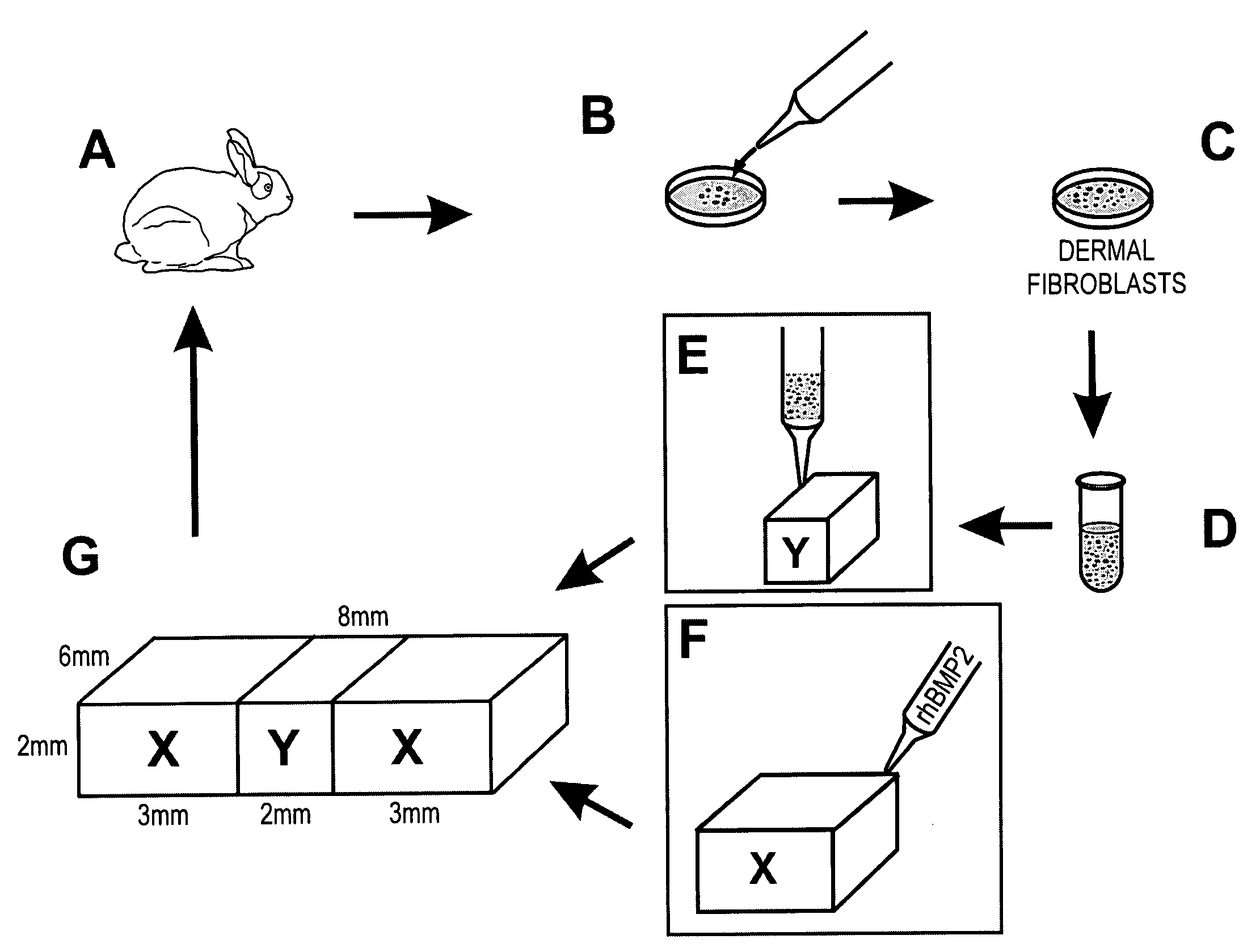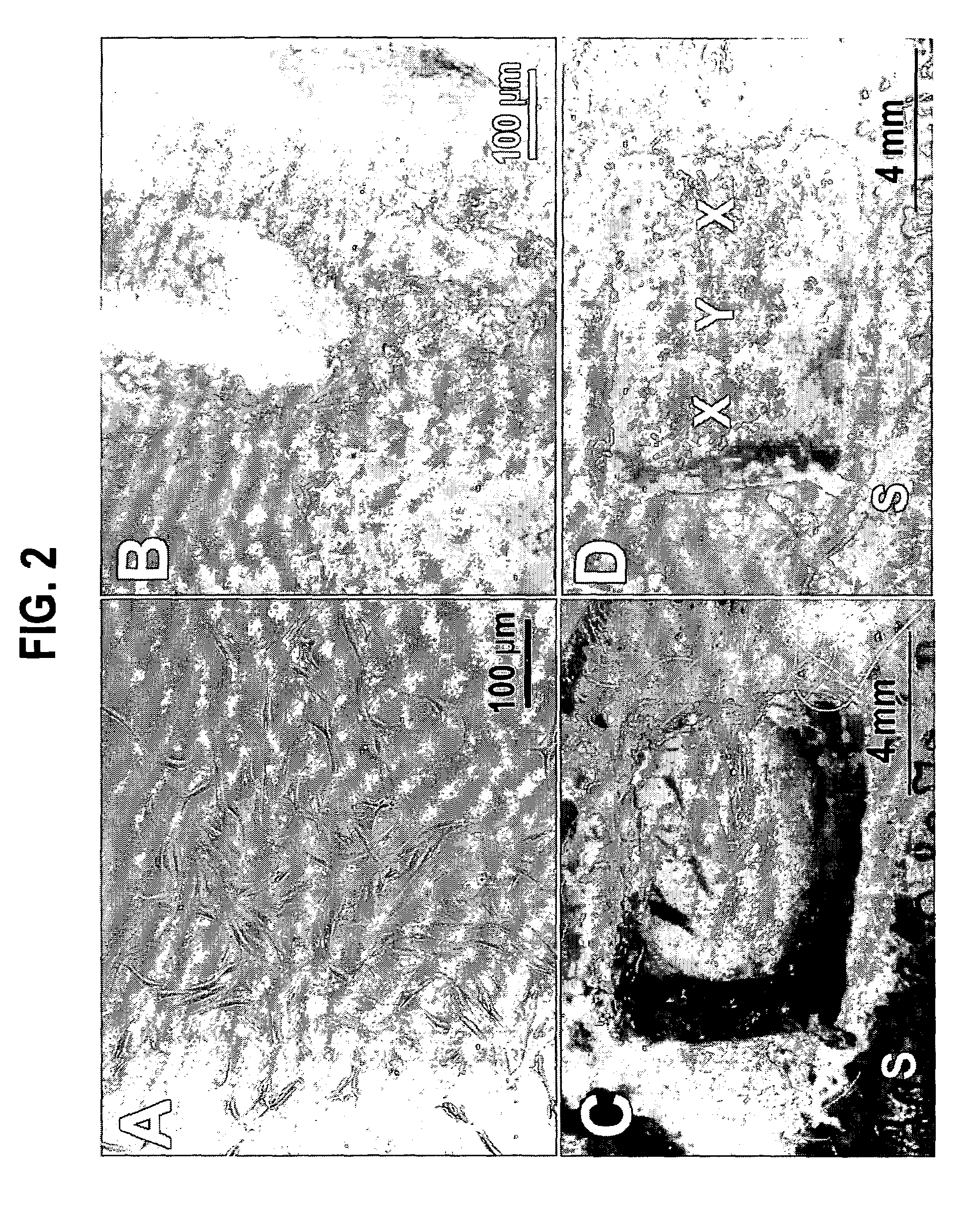In vivo synthesis of connective tissues
a technology of connective tissue and in vivo synthesis, which is applied in the direction of ligaments, prostheses, peptides, etc., can solve the problems of inability to successfully transplant cranial sutures, necessitate the creation of secondary bony defects, and inability to meet the needs of patients,
- Summary
- Abstract
- Description
- Claims
- Application Information
AI Technical Summary
Benefits of technology
Problems solved by technology
Method used
Image
Examples
example 1
Synthesis of Cranial Sutures In Vivo
[0042]A. Isolation of Dermal Fibroblasts and Fabrication of Fibroblastic Composition
[0043]Eight, 8-week-old, male, New Zealand White rabbits were used in the isolation of dermal fibroblasts after approval by the Animal Care Committee of the University of Illinois at Chicago. Under general anesthesia and aseptic conditions, a 5-mm incision was made in the anterior tibial skin of the rabbit (FIG. 1A). A small piece of subcutaneous fibrous tissue (approx. 3×3 mm2) was removed, minced and digested with the enzyme Accutase under 37° C. for 1 hour, followed by neutralization with Dulbeccols Modified Eagle's Medium-Low Glucose (DMEM; Sigma, St. Louis, Mo.) supplemented with 10% fetal bovine serum (FBS) (Biocell, Rancho Dominguez, Calif.) (FIG. 1B).
[0044]The digested tissue solution was filtered through a cell restrainer (100 μm pore size). After centrifugation, the isolated dermal fibroblasts were plate-cultured (106 cells / 100 mm dish) and expanded in DM...
PUM
| Property | Measurement | Unit |
|---|---|---|
| pore size | aaaaa | aaaaa |
| temperature | aaaaa | aaaaa |
| thick | aaaaa | aaaaa |
Abstract
Description
Claims
Application Information
 Login to View More
Login to View More - R&D
- Intellectual Property
- Life Sciences
- Materials
- Tech Scout
- Unparalleled Data Quality
- Higher Quality Content
- 60% Fewer Hallucinations
Browse by: Latest US Patents, China's latest patents, Technical Efficacy Thesaurus, Application Domain, Technology Topic, Popular Technical Reports.
© 2025 PatSnap. All rights reserved.Legal|Privacy policy|Modern Slavery Act Transparency Statement|Sitemap|About US| Contact US: help@patsnap.com



